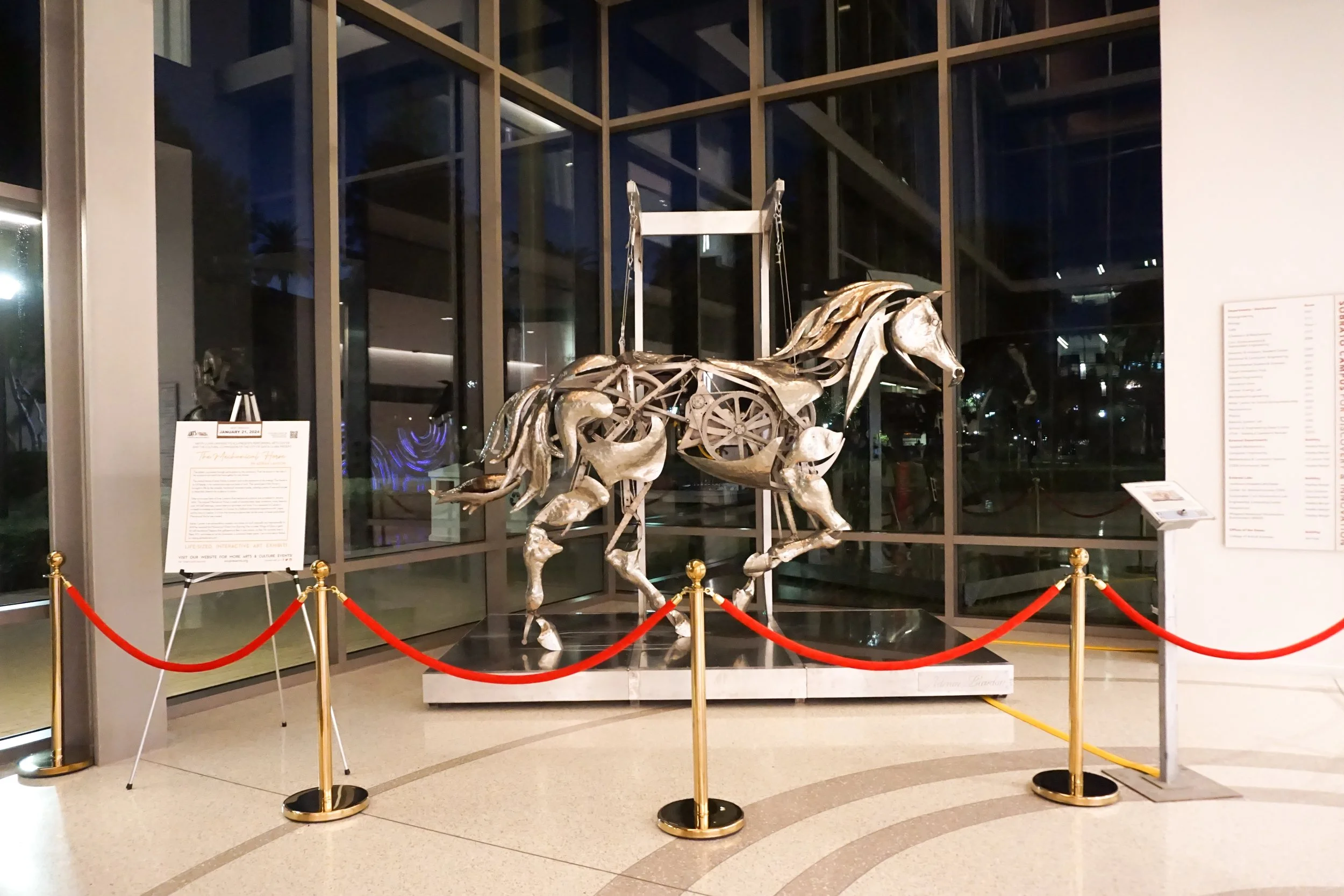Equine Engineering
The press of a button gradually brings the machine, which hangs frozen from the ceiling, to life
Photo personnel: Isa Montes Source: Amy Suh
Monochromatic, fluorescent wings intersect at precise, homogenous angles in the empty Sobrato Campus for Discovery and Innovation. As the next wave of engineering students floods the building, they must navigate a web of streamlined sameness. But by the north entrance, that stillness is now breached by an intermittent chorus of clanking and whirring gears.
From Sept. 25 to Jan. 21, Mechanical Horse will be on display in the north SCDI lobby. The press of a button gradually brings the machine, which hangs frozen from the ceiling, to life, the skeletal horse figure scraping away at the ground as it eases into a gallop with surprisingly lifelike movement. The work’s artist, Adrian Landon, has spent the past few years capturing the dynamic motion of horses with carefully molded steel and bronze. Polished exteriors give way to an intricately crafted heart of gears and belts, powering delicate joints as their jagged pieces slot into place.
Landon first caught the eye of Santa Clara curators with the acclaimed piece Pegasus, a massive, winged creature of metal and flame that debuted at Burning Man – the creation process is thoroughly recorded in the film “Wings of Glory.”
In the documentary, the artist details how he first started out. “I had no idea what I was doing in the beginning,” Landon said. ”I had no background in engineering or mechanics. All I had was my experience with Legos as a kid. That’s all I had. And my basic metalworking skills at the time.”
Aside from aesthetic appeal, this exhibit also aims to motivate students to undertake a similar challenge this fall quarter. The Kinetic Art Challenge – which runs until Nov. 16 – welcomes any creatively-inclined Santa Clara student to create their own devices that mimic organic objects with mechanical motion. As is the case year round, students will have access to the impressive suite of resources and mentoring at the maker lab to construct their ambitions into a reality. A panel of judges will distribute $500 prizes to the best of show in three categories: Powered Artistic Devices, Passive Artistic Devices and Reactive Artistic Devices.
Christopher Kitts, head of the maker lab, wants to dispel the perceived divide between STEM and the arts. “I probably am writing more than I'm solving equations, and communicating and articulating,” Kittshe said. “I run the innovation program. The sociological, ethnographical kinds of approaches are critical to that.”
Placing the sculpture in a STEM-oriented facility serves as a vital reminder to students that no field is self-contained. Design is the recognition of beauty.
The registration deadline for the Kinetic Arts Challenge is Oct. 13. Mechanical Horse was the product of collaboration between the Cultural Commission of the City of Santa Clara and Santa Clara University.
